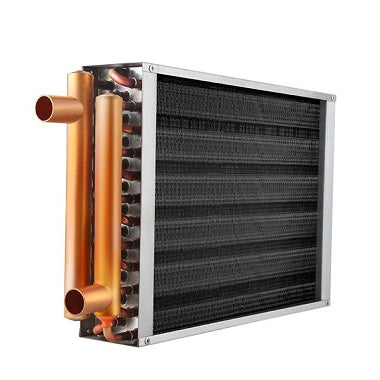In today's world, the necessity for efficient energy transfer is more prevalent than ever. At the heart of this intricate dance of temperature and movement lie devices known as heat exchangers. In this deep dive, we’ll focus on the magic behind the water to air heat exchanger, its counterpart – the air to water heat exchanger, and the importance of their interplay.
What Exactly is Water to Air Heat Exchanger?
Water to air heat exchanger is not just a piece of equipment but a marvel of modern engineering. Imagine having the power to move warmth from water and give it to the air or take heat from it and pass it to the water – that's what this device does. By achieving this, these heat exchangers become invaluable tools. They play critical roles in many sectors, from large-scale industries to our homes. The primary objective? To help regulate and balance temperatures, ensure environments are just right, whether warm or cold.
How Does the Air to Water Version Differ?
Now, if we talk about the air to water heat exchanger, it’s like the twin sibling of the water to air version, but with a twist. While the foundation remains the same, the direction of heat transfer is switched. Instead of moving heat from water to the surrounding air, this device takes warmth from the air – think of a hot summer day – and funnels it into the water. It's this adaptability that makes these heat exchangers so special. They can be tweaked and tailored to offer solutions for many situations, fitting seamlessly into various settings.
Common Applications: Where Might I Encounter Them?
You might wonder, “Where do I come across these water to air heat exchangers in my daily life?” The answer is, in more places than you'd think. These devices have carved out a niche in several areas. Take a moment to consider:
- Radiator systems in vehicles: Think about the car you drive or the bus you take. The radiator system is pivotal in managing engine temperatures using these heat exchangers.
- Heating and cooling in buildings: Walk into a comfortably heated room during winter or a cool haven in the summers, and there's likely a heat exchanger working behind the scenes.
- Industrial cooling processes: Factories and manufacturing units rely heavily on them. Whether it's to cool machinery or manage the temperature of products, these heat exchangers are integral.
Are They Interchangeable in Function?
Here's where things get a bit intricate. While both the heat exchanger water to air and its air to water variant share common ground in design and function, they serve distinct purposes. It's like having two musical instruments that look alike but play different tunes. The water to air type mainly moves heat from water sources and disperses it to the air. Conversely, the air to water type grabs the ambient warmth and transfers it to water. So, while they might seem similar, choosing between them depends largely on the specific need at hand. One isn't necessarily better than the other; it's more about what the situation demands.
Benefits of Opting for Water to Air System
When diving into the world of heat exchangers, one can't help but admire the numerous advantages of the water to air heat exchanger. Here's a deeper insight:
- Enhanced Efficiency: Its ability to offer remarkable energy savings is at the heart of a well-constructed water to air heat exchanger. When carefully designed and smoothly integrated, these systems can significantly cut down energy consumption, leading to reduced bills and a smaller carbon footprint.
- Flexibility: The beauty of these heat exchangers lies in their adaptability. Whether you're looking to regulate temperatures in a cozy home, an office space, or even massive industrial setups, these systems rise to the occasion. Their vast range of applications spanning personal and professional domains makes them an invaluable asset in temperature management.
- Durability: Nothing beats a system that stands the test of time. These water to air heat exchangers promise longevity with periodic maintenance and care. They are crafted to deliver unwavering performance over extended periods, ensuring that your spaces remain comfortable year after year.
What Dictates Their Efficiency?
Diving deeper into the workings of a water to air heat exchanger, one realizes the intricacies that determine their effectiveness:
- Material Composition: The foundation of any good heat exchanger lies in its build. Different materials have varied heat transfer capacities. The choice of material, whether it's copper, aluminum, or stainless steel, can significantly affect how efficiently the system operates.
- Flow Rates: It's a simple principle; the speed at which water and air move through the exchanger can influence the heat transfer process. One can fine-tune the system's efficiency by optimizing and regulating these flow rates.
- Design and Configuration: The design layout is pivotal beyond materials and flow. From the arrangement of plates to the overall configuration, every design choice can impact the performance of the water to air heat exchanger.
The Future of Heat Exchange
With ever-advancing technologies and an increasing focus on sustainable solutions, the future of heat exchange is bright. Whether it's the heat exchanger water to air or its opposite counterpart, the potential for innovation and refinement remains vast. As we journey forward, these tools will continue to play an integral role in shaping the landscape of energy and temperature management.
See our last posts

